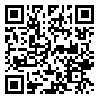Volume 22, Issue 3 (12-2023)
jhosp 2023, 22(3): 233-249 |
Back to browse issues page
Download citation:
BibTeX | RIS | EndNote | Medlars | ProCite | Reference Manager | RefWorks
Send citation to:



BibTeX | RIS | EndNote | Medlars | ProCite | Reference Manager | RefWorks
Send citation to:
Zargar balaye jame S, Markazi moghaddam N, SHarifnia H, KHoshian M. Estimating the total cost of imaging services of a hospital using the time-driven activity-based costing method (TDABC) in 2018. jhosp 2023; 22 (3) :233-249
URL: http://jhosp.tums.ac.ir/article-1-6581-en.html
URL: http://jhosp.tums.ac.ir/article-1-6581-en.html
1- Associate Professor, Department of Public Health, School of Medicine, AJA University of medical sciences, Tehran, Iran. *Corresponding Author Email: sanazzargar@gmail.com
2- Associate Professor, Critical Care Quality Improvement Research Center, Shahid Modarres Hospital, Shahid Beheshti University of Medical Sciences, Tehran, Iran.
3- Assistant Professor, Department of Public Health, School of Medicine, AJA University of medical sciences, Tehran, Iran.
4- MSc, Health Care Services Management, School of Medicine, AJA University of medical sciences, Tehran, Iran.
2- Associate Professor, Critical Care Quality Improvement Research Center, Shahid Modarres Hospital, Shahid Beheshti University of Medical Sciences, Tehran, Iran.
3- Assistant Professor, Department of Public Health, School of Medicine, AJA University of medical sciences, Tehran, Iran.
4- MSc, Health Care Services Management, School of Medicine, AJA University of medical sciences, Tehran, Iran.
Abstract: (649 Views)
Background and Purpose: Medical imaging is one of the most expensive sections of a hospital due to the use of superior technology, specialized personnel, and adherence to special protective regulations, all of which have a direct impact on the diagnosis and treatment of diseases. Time-driven activity-based costing (TDABC) provides an overview of hospital activities, enabling the identification and management of costs and resources with greater accuracy and ease. The purpose of this study is to examine the total costs of services and the unused capacity of resources to provide financial management solutions for hospital administrators.
Materials and Methods: This descriptive and retrospective study was conducted on the statistics and accounting data of a general hospital in Tehran in 2018. The study falls under the category of applied research due to the potential use of the results in financial management and resource consumption. The data collection method included the review of documents and financial statements, timing of all activities in the imaging department, and calculations based on the time-driven activity-based costing method, using Excel software, with the elimination of the cost of unused resources.
Results: The study found that the total cost was mostly below the approved tariffs, with the main cost components being 34% manpower, 23% overhead, 22% equipment, and 15% consumables. The findings indicated that only 58% of resource provisioning expenses played a role in determining the total cost of services.
Conclusion: The findings of this research suggest that reducing the unused capacity of resources and organizational reforms can decrease the total cost of services, increase profitability, and optimize resource usage to enhance the quality of hospital services.
Materials and Methods: This descriptive and retrospective study was conducted on the statistics and accounting data of a general hospital in Tehran in 2018. The study falls under the category of applied research due to the potential use of the results in financial management and resource consumption. The data collection method included the review of documents and financial statements, timing of all activities in the imaging department, and calculations based on the time-driven activity-based costing method, using Excel software, with the elimination of the cost of unused resources.
Results: The study found that the total cost was mostly below the approved tariffs, with the main cost components being 34% manpower, 23% overhead, 22% equipment, and 15% consumables. The findings indicated that only 58% of resource provisioning expenses played a role in determining the total cost of services.
Conclusion: The findings of this research suggest that reducing the unused capacity of resources and organizational reforms can decrease the total cost of services, increase profitability, and optimize resource usage to enhance the quality of hospital services.
Type of Study: Case Study |
Subject:
مدیریت مالی و اقتصاد در بیمارستان
Received: 2023/01/12 | Accepted: 2023/09/14 | Published: 2024/06/11
Received: 2023/01/12 | Accepted: 2023/09/14 | Published: 2024/06/11
| Rights and permissions | |
 |
This work is licensed under a Creative Commons Attribution-NonCommercial 4.0 International License. |





